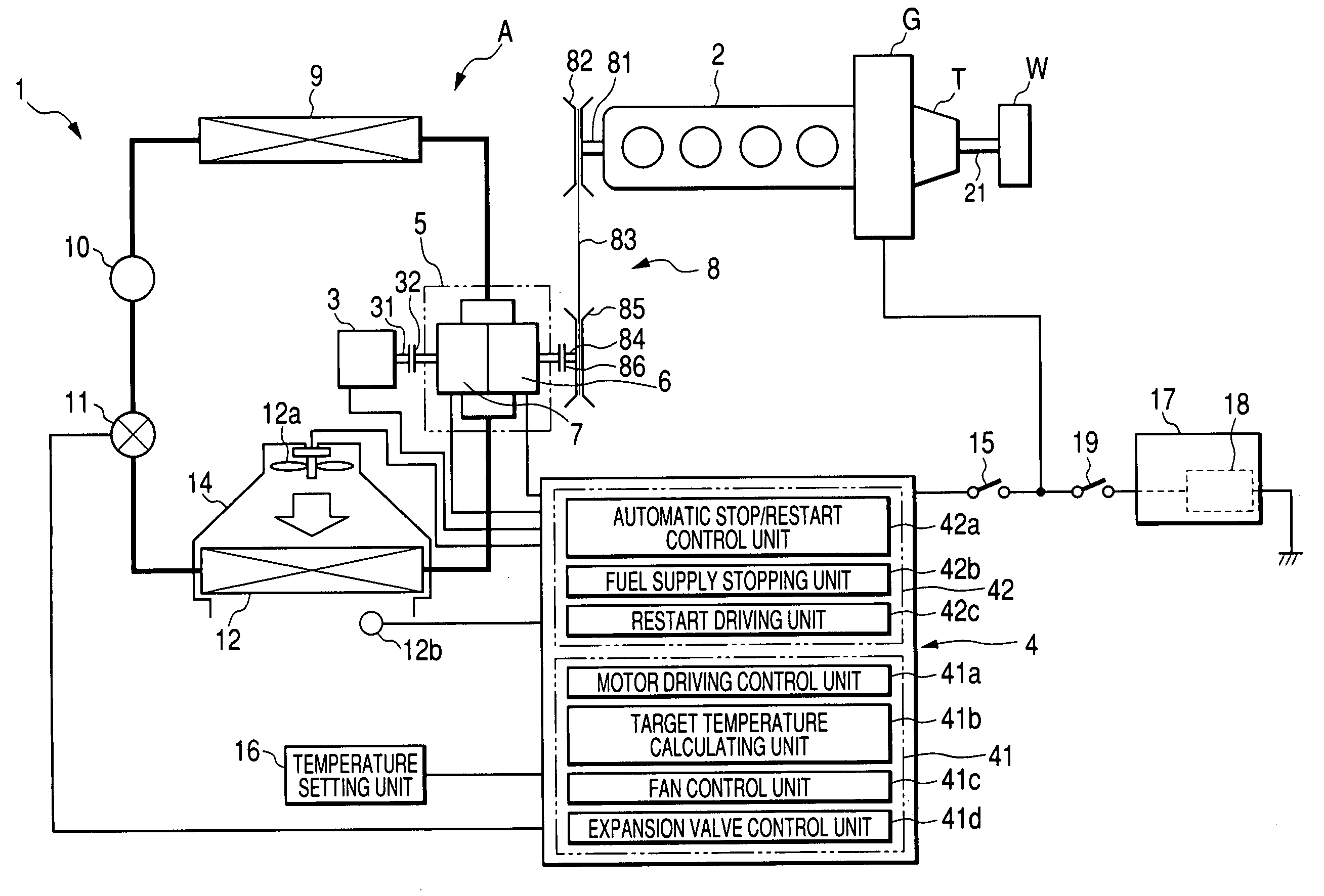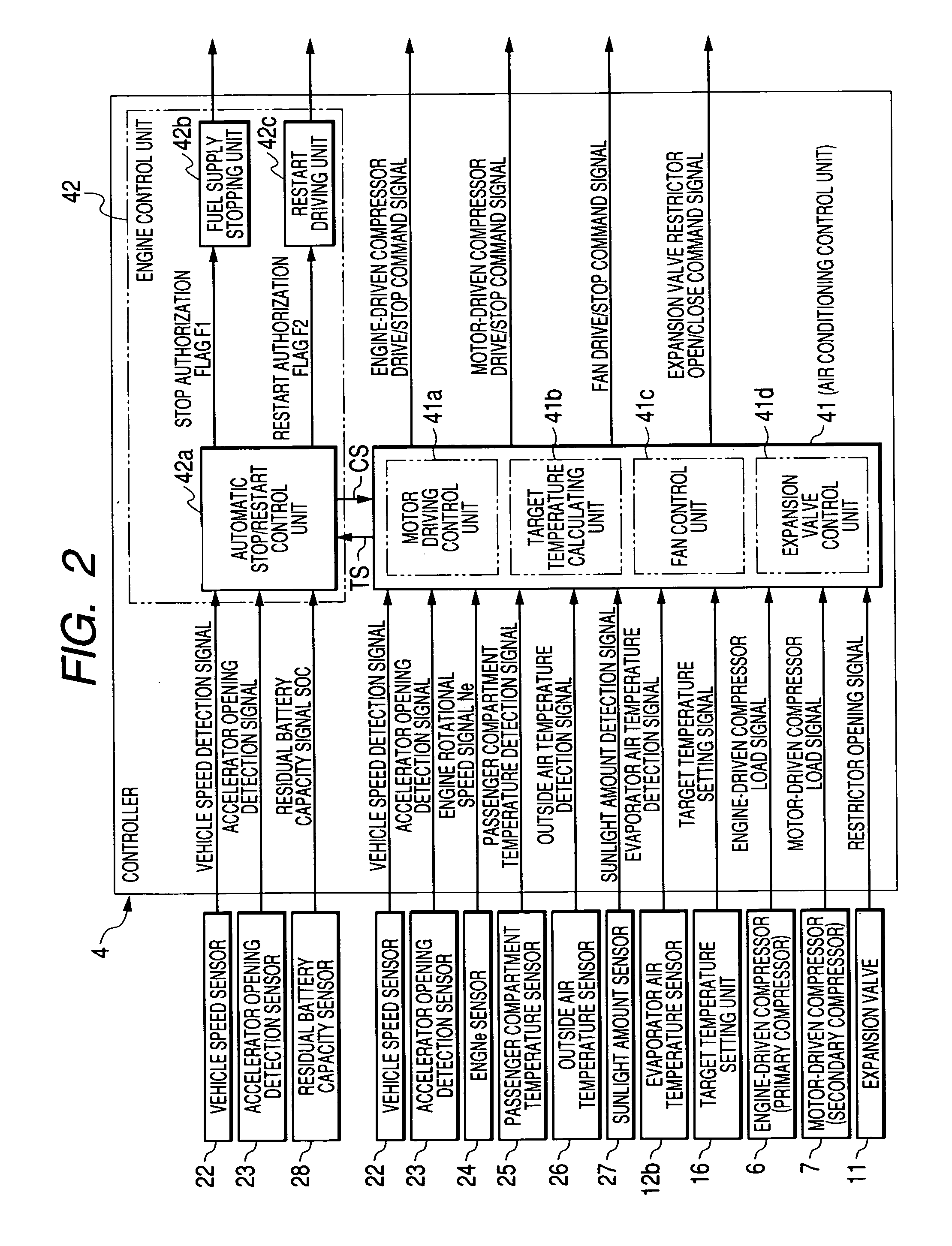Air conditioning system for vehicle
a technology for air conditioning systems and vehicles, applied in refrigeration components, transportation and packaging, light and heating equipment, etc., can solve the problems of increased temperature in the passenger compartment of the vehicle, inconvenient condition where the windows are fogged, and occupants' discomfort, so as to achieve comfortable temperature and prevent the increase in the interior temperature of the passenger compartmen
- Summary
- Abstract
- Description
- Claims
- Application Information
AI Technical Summary
Benefits of technology
Problems solved by technology
Method used
Image
Examples
Embodiment Construction
[0024]An embodiment of an air conditioning system for a vehicle according to the invention will be described in detail below by reference to the accompanying drawings.
[0025]FIG. 1 is a schematic drawing showing an air conditioning system for a vehicle according to an embodiment of the invention.
[0026]As shown in FIG. 1, the air conditioning system (hereinafter, referred simply to an “air conditioning system”) is such as to operate using as driving sources an engine 2 which is a driving source of a vehicle and a motor 3 for a motor-driven compressor 7.
[0027]While the air conditioning system 1 is optimum as a system that is installed, for example, in a vehicle having a function to temporarily stop the idling of an engine thereof, the air conditioning system may be installed either in the vehicle having the stop-idling function or in a vehicle having no such stop-idling function.
[0028]Hereinafter, an embodiment of the invention will be described by taking as an example an air condition...
PUM
 Login to View More
Login to View More Abstract
Description
Claims
Application Information
 Login to View More
Login to View More - R&D
- Intellectual Property
- Life Sciences
- Materials
- Tech Scout
- Unparalleled Data Quality
- Higher Quality Content
- 60% Fewer Hallucinations
Browse by: Latest US Patents, China's latest patents, Technical Efficacy Thesaurus, Application Domain, Technology Topic, Popular Technical Reports.
© 2025 PatSnap. All rights reserved.Legal|Privacy policy|Modern Slavery Act Transparency Statement|Sitemap|About US| Contact US: help@patsnap.com



